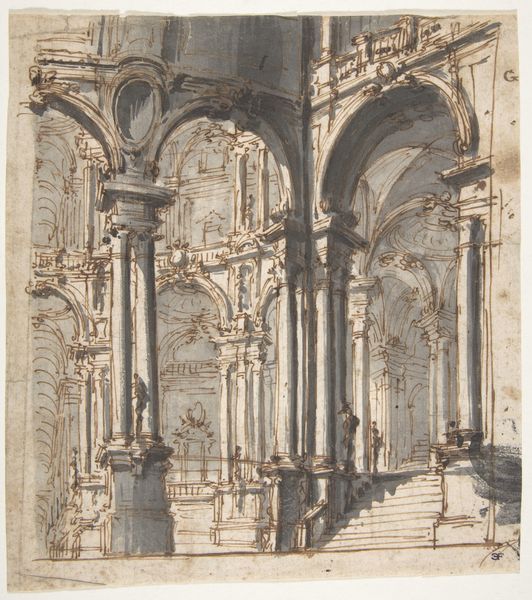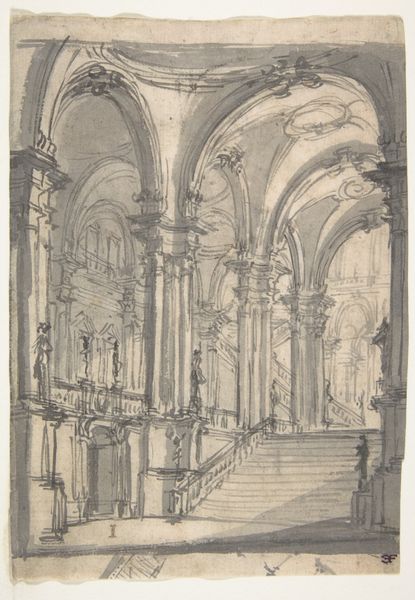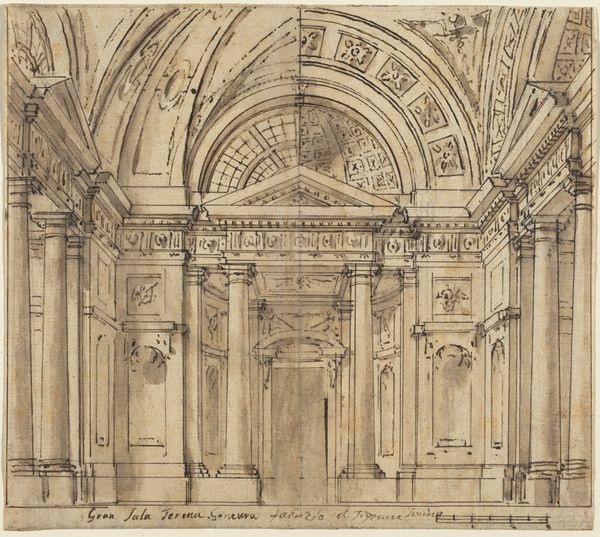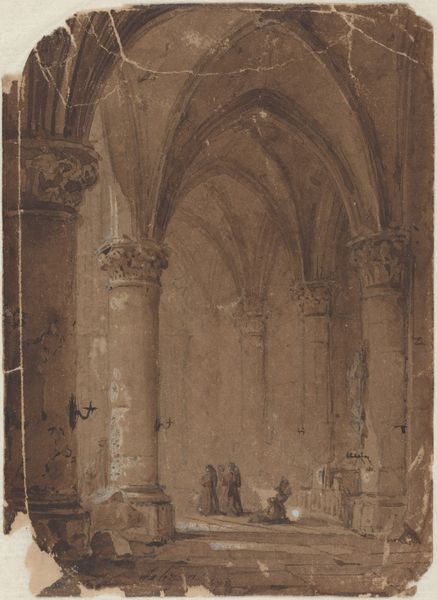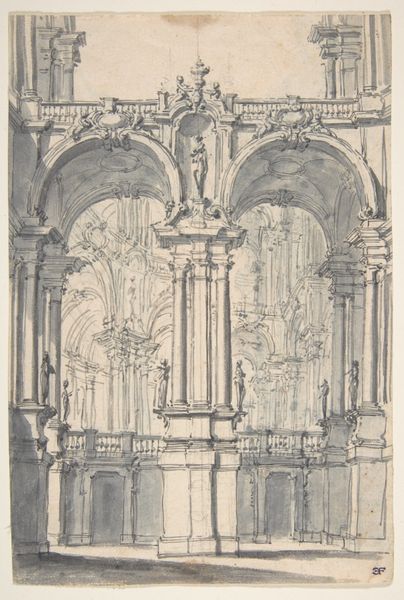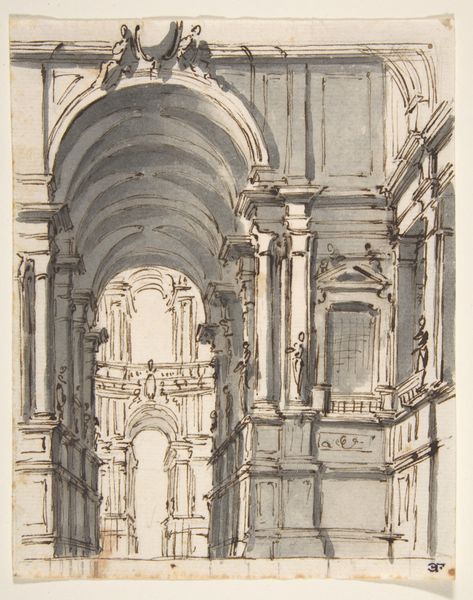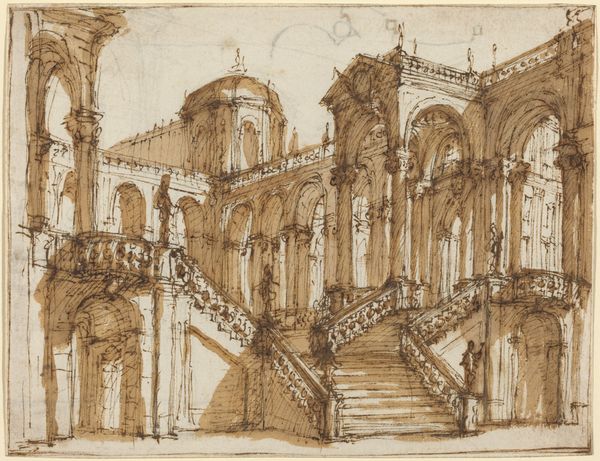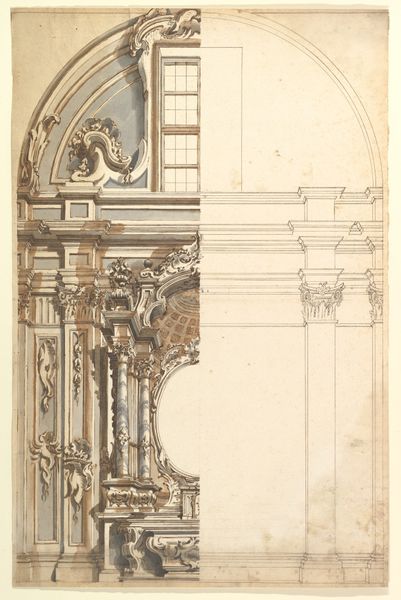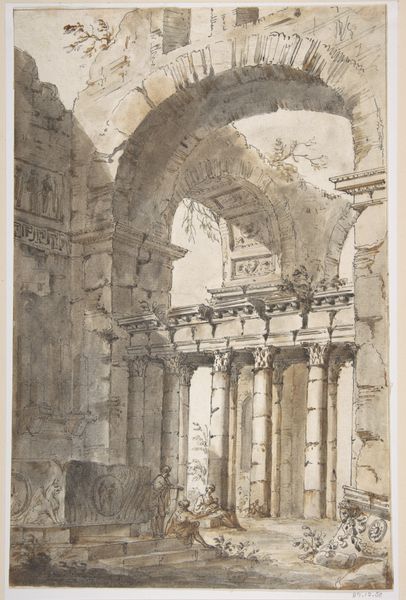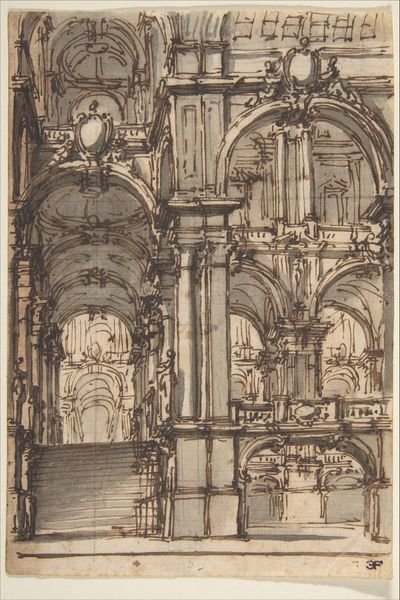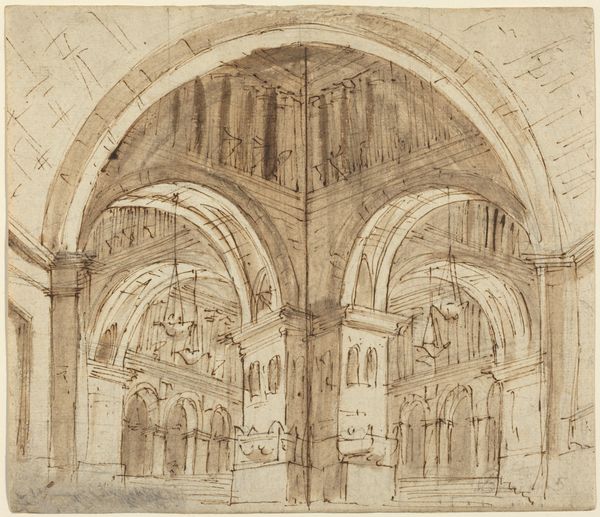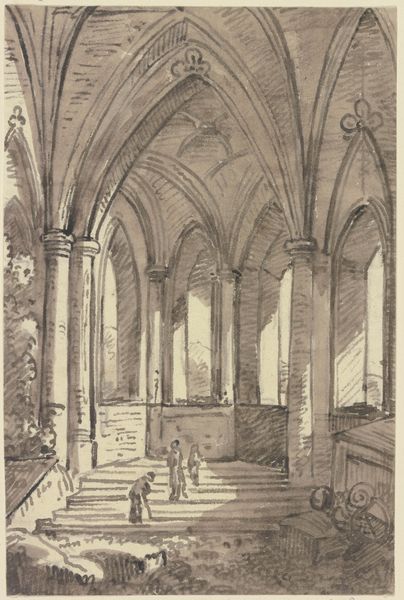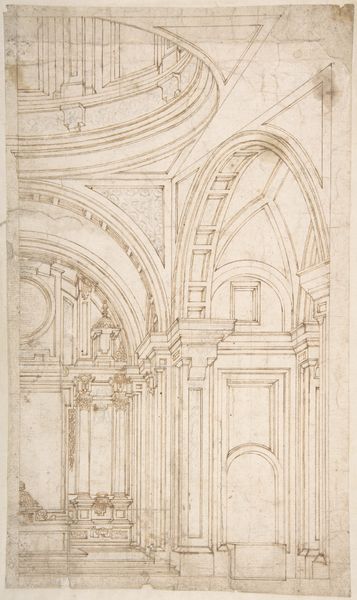
Architectural Study (recto); Separate Sheet with Architectural Drawing (verso) 1676 - 1736
0:00
0:00
drawing, tempera, print, ink, pencil, architecture
#
architectural sketch
#
drawing
#
baroque
#
tempera
# print
#
pencil sketch
#
etching
#
ink
#
geometric
#
pen-ink sketch
#
pencil
#
academic-art
#
architecture
Dimensions: sheet: 8 1/4 x 7 in. (21 x 17.8 cm)
Copyright: Public Domain
Curator: Looking at this architectural sketch by Filippo Juvarra, I’m immediately struck by the grandeur. The sweeping lines of the arches give me a sense of vastness, almost dizzying. What catches your eye first? Editor: I'm also captivated by the sketch's dynamism and its commitment to spatial construction, but from a historical lens, this Baroque style exudes the authority of the era's social institutions. Did spaces like these promote elitism and exclusion? Curator: It's an important question to consider. Looking closer, there’s the interplay between light and shadow—the use of ink and pencil create depth and complexity. The geometry represented also suggests symbolic and divine presence. I understand the urge to investigate possible problematic messages, but I believe that the space also represents harmony between man and God, echoing universal aspirations through architecture. Editor: Harmony, maybe, but whose harmony? Such visual power inevitably trickles down into real-world power dynamics. Architecture, in its design and intent, can become an agent of social control, promoting cultural dominance that often silences alternative expressions and disenfranchises vulnerable groups. Curator: Perhaps. I notice too the artist's technique. The meticulous detail with which Juvarra delineates the architectural elements. He was meticulous when representing elements like the coffered ceiling, but even in this careful observation, does any particular iconography call to your mind? Editor: This level of artistry is an example of how those in power try to present their projects in idealized terms, which risks romanticizing and erasing their harmful influence. It could represent hope, but to which demographic does the symbolism resonate? Is its reach universal? These kinds of sketches risk promoting not truth and divinity but domination. Curator: I concede it's not straightforward. Still, there’s something deeply human in this desire to create monumental spaces that speaks across time. Whether for political reasons or genuine artistic passion, this creation makes it worthwhile for the visitor to behold its symbolism and intent. What should people consider as they move on from it, would you say? Editor: To view works like Juvarra's with critical awareness, questioning how art mirrors, shapes, and also potentially perpetuates inequality. Thank you for speaking to its significance from an artistical and iconographic level.
Comments
No comments
Be the first to comment and join the conversation on the ultimate creative platform.
